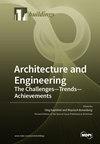Data-Driven Prediction of Electrical Resistivity of Graphene Oxide/Cement Composites Considering the Effects of Specimen Size and Measurement Method
IF 3.1
3区 工程技术
Q2 CONSTRUCTION & BUILDING TECHNOLOGY
引用次数: 0
Abstract
The prediction of electrical resistivity of graphene oxide (GO) reinforced cement composites (GORCCs) is essential to promote the application of the composites in civil engineering. Traditional experiments find it challenging to capture the effect of various features on the electrical resistivity of the GORCCs. In this work, machine learning (ML) techniques are employed to explore the complex nonlinear relationships between different influencing factors and the electrical resistivity of the GORCCs. A total of 171 datasets are utilized for training and testing the ML models. It is demonstrated that the applied ML models are effective and efficient. Apart from the water/cement ratio, correlation analysis shows that the electrical resistivity of the GORCCs is highly dependent on the specimen size and measurement method. Feature importance analysis shows that the dispersion of GO has a significant influence on the electrical resistivity. The extreme gradient boosting (XGB) model and the artificial neural network (ANN) model with 3 hidden layers are proven to have better predictions, as evidenced by higher R2 and lower root mean square error (RMSE). This work is envisioned to provide an effective and efficient way to identify the complex relationship between the material properties of the GORCCs and the various influencing factors.数据驱动的氧化石墨烯/水泥复合材料电阻率预测(考虑试样尺寸和测量方法的影响
预测氧化石墨烯(GO)增强水泥复合材料(GORCC)的电阻率对于促进复合材料在土木工程中的应用至关重要。传统实验难以捕捉各种特征对 GORCC 电阻率的影响。在这项工作中,采用了机器学习(ML)技术来探索不同影响因素与 GORCC 电阻率之间的复杂非线性关系。共有 171 个数据集用于训练和测试 ML 模型。结果表明,所应用的 ML 模型是有效和高效的。除了水灰比之外,相关性分析表明 GORCC 的电阻率与试样尺寸和测量方法有很大关系。特征重要性分析表明,GO 的分散性对电阻率有显著影响。极端梯度提升(XGB)模型和具有 3 个隐藏层的人工神经网络(ANN)模型被证明具有更好的预测效果,更高的 R2 和更低的均方根误差(RMSE)就是证明。这项工作旨在提供一种有效和高效的方法,以确定 GORCC 材料特性与各种影响因素之间的复杂关系。
本文章由计算机程序翻译,如有差异,请以英文原文为准。
求助全文
约1分钟内获得全文
求助全文
来源期刊

Buildings
Multiple-
CiteScore
3.40
自引率
26.30%
发文量
1883
审稿时长
11 weeks
期刊介绍:
BUILDINGS content is primarily staff-written and submitted information is evaluated by the editors for its value to the audience. Such information may be used in articles with appropriate attribution to the source. The editorial staff considers information on the following topics: -Issues directed at building owners and facility managers in North America -Issues relevant to existing buildings, including retrofits, maintenance and modernization -Solution-based content, such as tips and tricks -New construction but only with an eye to issues involving maintenance and operation We generally do not review the following topics because these are not relevant to our readers: -Information on the residential market with the exception of multifamily buildings -International news unrelated to the North American market -Real estate market updates or construction updates
 求助内容:
求助内容: 应助结果提醒方式:
应助结果提醒方式:


